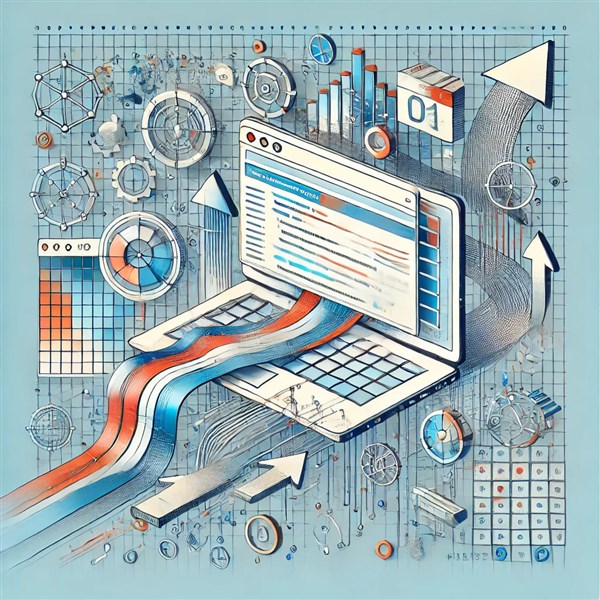We're open through the holidays to support your upskilling goals — Which training do you want to book?
We're open through the holidays to support your upskilling goals — Which training do you want to book?
Unable to find what you're searching for?
We're here to help you find it
In today’s data-driven world, the ability to collect structured information from unstructured sources is gold. Whether you’re a budding data scientist, an aspiring developer, or a digital entrepreneur, web scraping is a must-have skill.
But where do you start?
Enrolling in a web scraping training program is a powerful way to gain hands-on skills that are immediately applicable to real-world use cases—from lead generation and market research to data analysis and machine learning.
In this blog, we’ll walk you through the top skills you’ll learn in a web scraping training course, and why they matter for your career in tech, business, or research.
Before you can scrape data, you need to understand how websites work.
What You’ll Learn:
Why It Matters:
Web scraping starts with locating the right data on a page. Without understanding the structure, you’ll be blindly navigating HTML code.
This is the bread and butter of web scraping.
What You’ll Learn:
Why It Matters:
Effective parsing ensures accurate data collection. It saves time and prevents errors in your final datasets.
Many modern websites load content dynamically using JavaScript—making static scraping methods ineffective.
What You’ll Learn:
Why It Matters:
This skill allows you to scrape data from platforms like LinkedIn, Instagram, or any site using AJAX or React/Angular frameworks.
While Selenium mimics browser behavior, requests-based scraping is faster and more efficient for simple sites.
What You’ll Learn:
Why It Matters:
Direct requests reduce overhead and allow for scalable scraping, especially when dealing with large datasets or APIs.
Not all data requires scraping from HTML. Some websites offer public APIs—a cleaner and faster option.
What You’ll Learn:
Why It Matters:
Using APIs where possible is more reliable, efficient, and often within legal boundaries.
The data you scrape is rarely ready to use—it often needs cleanup and transformation.
What You’ll Learn:
Why It Matters:
Clean data leads to better insights, more accurate models, and fewer bugs in your applications.
Websites don’t always welcome bots. Many use protections to block automated scraping.
What You’ll Learn:
Why It Matters:
Understanding these tactics ensures you don’t get blocked and helps you scrape data at scale.
Scraping without permission can get you into trouble. A good training program teaches how to scrape responsibly.
What You’ll Learn:
Why It Matters:
Staying compliant protects your reputation and prevents legal complications, especially when scraping sensitive or personal data.
Once you’ve built a scraper, you’ll want it to run automatically.
What You’ll Learn:
Why It Matters:
Automation allows your data pipelines to run 24/7 without manual intervention—perfect for price tracking, news monitoring, or lead generation.
Where does all your scraped data go?
What You’ll Learn:
Why It Matters:
Organized data is easier to analyze, share, and turn into business insights or machine learning input.
Most training programs include hands-on projects to apply what you’ve learned.
Sample Projects:
Why It Matters:
Real-world projects build your portfolio and prepare you for freelance, employment, or startup opportunities.
For advanced learners, training often includes collaborative tools like Git and GitHub.
What You’ll Learn:
Why It Matters:
These are industry-standard skills that make you a team-ready developer.
Conclusion
Web scraping isn’t just about pulling data from websites—it’s about building intelligent systems that can gather, clean, and deliver information in real-time.
By enrolling in a structured web scraping training program, you’ll gain a valuable mix of technical, analytical, and ethical skills. These skills are in high demand across sectors like finance, marketing, research, and e-commerce.
Whether you're a student, freelancer, or working professional, these skills will give you an edge in the fast-evolving world of data and automation.
In conclusion, a web scraping training course can equip you with a valuable set of skills that are highly sought after in today's job market. Whether you're interested in data science, digital marketing, or just want to learn more about how the web works, web scraping is a useful skill to have.
At Koenig Solutions, a leading IT training company, we offer comprehensive training courses in web scraping, amongst other top technology courses. Our courses are designed to provide you with the skills and knowledge you need to excel in your chosen field.

Aarav Goel has top education industry knowledge with 4 years of experience. Being a passionate blogger also does blogging on the technology niche.










